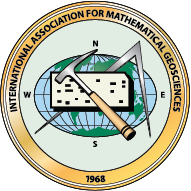Keynote speakers and IAMG Awardees
Keynote Speakers
- Professor Inga Berre, University of Bergen
- Associate Professor Michael Pyrcz, The University of Texas at Austin
- Professor András Bárdossy, University of Stuttgart
IAMG Awardees
- Professor Pieter Vermeesch, University College London - Felix Chayes Prize 2023
- Dr. Shaunna Morrison, Carnegie Institution for Science - Andrei Borisovich Vistelius Research Award 2023
- Dr. Behnam Sadeghi, CSIRO / Carnegie Institution for Science - Andrei Borisovich Vistelius Research Award 2023
- Professor Jennifer McKinley, Queen’s University Belfast - Distinguished Lecturer 2023
- Professor Xavier Emery, Universidad de Chile - Georges Matheron Lecturer 2023
Keynote Speakers↑
Inga Berre↑
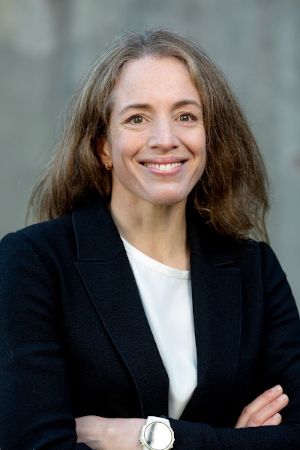 Inga Berre is professor at the Department of Mathematics and director of the Center for Modeling of Coupled Subsurface Dynamics (CSD) at the University of Bergen. Her main research interests are mathematical modelling, partial differential equations and numerical methods, motivated by simulation of coupled thermo-hydro-mechanical-chemical processes in geothermal systems and fault reactivation induced by subsurface injection and production. She is the principal investigator of the ERC Consolidator Grant: "Mathematical and Numerical Modelling of Process-Structure Interaction in Fractured Geothermal Systems" (MaPSI, 2021-2026).
Inga Berre is professor at the Department of Mathematics and director of the Center for Modeling of Coupled Subsurface Dynamics (CSD) at the University of Bergen. Her main research interests are mathematical modelling, partial differential equations and numerical methods, motivated by simulation of coupled thermo-hydro-mechanical-chemical processes in geothermal systems and fault reactivation induced by subsurface injection and production. She is the principal investigator of the ERC Consolidator Grant: "Mathematical and Numerical Modelling of Process-Structure Interaction in Fractured Geothermal Systems" (MaPSI, 2021-2026).
Talk title: Modeling of coupled processes in fractured geothermal systems
Geothermal systems are typically characterized by fractured structures which impacts coupled thermo-hydro-mechanical processes. In this talk, we consider mathematical and numerical models for such systems with explicit representation of fractures. We discuss how the processes are strongly dominated by fractures in the formation, and how fractures can reactivate, deform, and propagate because of the thermo-hydro-mechanical processes. Examples of modeling of fracture deformation and propagation are shown for different scenarios. The first consider how fractures may deform as a response to reservoir fluid injection. This done in development of geothermal resources to actively stimulate fractures to open to enhance reservoir permeability, or during the production phase to re-inject produced geothermal brine. The second shows how natural convection in the systems can give rise to deep migration of fractures because of convective cooling and resulting thermal contraction of the rock, thereby contributing to transport of heat from the deep crust into the geothermal reservoir.
Michael Pyrcz↑
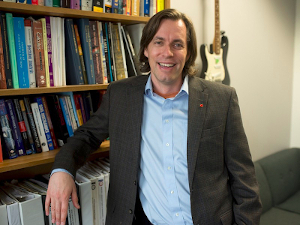 Michael Pyrcz is an Associate Professor in both the Cockrell School of Engineering and the Jackson School of Geosciences at the University of Texas at Austin. Dr. Pyrcz’s current research is focused on improving reservoir characterization and modeling for enhanced development planning, minimized environmental impact, stronger profitability and better utilization of valuable natural resources. He and his students work on reservoir modeling related problems of improved integration of geological concepts, modeling for unconventional plays, improved data integration, multiscale and multivariate modeling, machine learning, big data analytics, and optimal decision-making in the presence of uncertainty.
Michael Pyrcz is an Associate Professor in both the Cockrell School of Engineering and the Jackson School of Geosciences at the University of Texas at Austin. Dr. Pyrcz’s current research is focused on improving reservoir characterization and modeling for enhanced development planning, minimized environmental impact, stronger profitability and better utilization of valuable natural resources. He and his students work on reservoir modeling related problems of improved integration of geological concepts, modeling for unconventional plays, improved data integration, multiscale and multivariate modeling, machine learning, big data analytics, and optimal decision-making in the presence of uncertainty.
Talk title: Data Analytics and Machine Learning for Geostatistics
The subsurface resource industry has a long history of working with large, complicated geoscience and engineering datasets. Our community has been working with ‘big data’ for decades, driving the development and establishment of the geostatistical toolbox. As a result, we are uniquely situated in this current digital revolution, as we are further down the road of data-driven workflow development and have insights and experiences to share with the other scientific and engineering domains. The foundation of geostatistics, domain expertise, spatial continuity, scale and uncertainty remain essential for machine learning (even advanced deep learning architectures); therefore, we must lead in the advancement of new data analytics and machine learning technologies for subsurface applications. To reflect on this opportunity, I elucidate connections between geostatistics, data analytics and machine learning to frame up a vision for the future of geostatistics.
Andras Bardossy↑
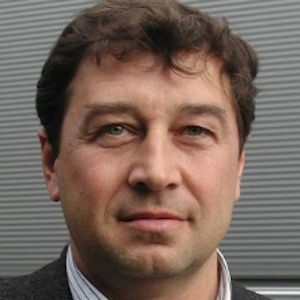 Dr. András Bárdossy is a Professor in Hydrology and Geohydrology at the University of Stuttgart. He holds a Ph.D. (Mathematics) from ELTE University of Budapest, 1981 and Dr.-Ing. in Civil Engineering from University of Karlsruhe, Germany, 1993. His major research areas are Hydrological modelling, stochastic hydrology, space-time statistics, geostatistics, stochastic simulations, multivariate statistics and general uncertainty quantification. He was member of the Scientific Committee IHP-OHP National Program (2005 2015); Recipient of the Henry Darcy Medal of the European Geosciences Union (2006); member of the Scientific Board of the Umweltforschungszentrum Leipzig (2006-2010); Member of the Senate Commission Water of the German Science Foundation (DFG) (2006 - 2010); Member of the Senate Commission Sonderforschungsbereiche of the German Science Foundation (DFG) (2009-2015) and External member of the Hungarian Academy of Sciences (2013 onwards). He has been Associate Editor of Journal of Hydrology (1997 - 2008), Hydrology and Earth System Sciences (2004 onwards), Hydrology Research (2000 - 2012) and Water Resources Research (2003 - 2011). He is Chief Editor of Journal of Hydrology (2008 onwards). He was Visiting Research Associate Professor at the University of Waterloo, Canada (1986 – 1987).Since 1995 he is Professor for Hydrology and Geohydrology at the University of Stuttgart, (2013-2022), he was Research Professor (part time) at the Newcastle University, England, since 2014, he is Honorary Professor of the University of KwaZulu Natal, Durban, South Africa, since 2019 Honorary Professor of the University of Queensland, Brisbane Australia and since 2019 he is Hohai Scholar at the Hohai University in Nanjing, China.. He supervised 54 completed PhDs at the University of Stuttgart.
Dr. András Bárdossy is a Professor in Hydrology and Geohydrology at the University of Stuttgart. He holds a Ph.D. (Mathematics) from ELTE University of Budapest, 1981 and Dr.-Ing. in Civil Engineering from University of Karlsruhe, Germany, 1993. His major research areas are Hydrological modelling, stochastic hydrology, space-time statistics, geostatistics, stochastic simulations, multivariate statistics and general uncertainty quantification. He was member of the Scientific Committee IHP-OHP National Program (2005 2015); Recipient of the Henry Darcy Medal of the European Geosciences Union (2006); member of the Scientific Board of the Umweltforschungszentrum Leipzig (2006-2010); Member of the Senate Commission Water of the German Science Foundation (DFG) (2006 - 2010); Member of the Senate Commission Sonderforschungsbereiche of the German Science Foundation (DFG) (2009-2015) and External member of the Hungarian Academy of Sciences (2013 onwards). He has been Associate Editor of Journal of Hydrology (1997 - 2008), Hydrology and Earth System Sciences (2004 onwards), Hydrology Research (2000 - 2012) and Water Resources Research (2003 - 2011). He is Chief Editor of Journal of Hydrology (2008 onwards). He was Visiting Research Associate Professor at the University of Waterloo, Canada (1986 – 1987).Since 1995 he is Professor for Hydrology and Geohydrology at the University of Stuttgart, (2013-2022), he was Research Professor (part time) at the Newcastle University, England, since 2014, he is Honorary Professor of the University of KwaZulu Natal, Durban, South Africa, since 2019 Honorary Professor of the University of Queensland, Brisbane Australia and since 2019 he is Hohai Scholar at the Hohai University in Nanjing, China.. He supervised 54 completed PhDs at the University of Stuttgart.
Talk title: Non linear and non Gaussian geostatistical models using Copulas
Spatial dependence of natural parameters can vary strongly due to the complex underlying geological, environmental or meteorological processes responsible for their generation. Copulas offer a flexible framework for the analysis of multivariate data and can be extended to random fields for geostatistical investigations. Copulas define dependence in the rank space and are independent of the marginal distributions of the variables, thus can be considered as descriptors of the spatial dependence only. One of the specific properties of spatial dependence which can be investigated using copulas is asymmetry. Many spatial processes such as advection-diffusion lead to asymmetric dependence – high values have different dependence structures then low ones, and directions of processes can be detected. Appropriate copula descriptor tools – asymmetry functions can be used to detect such structures. Models with changing spatial dependence can be used to mimic this kind of behaviour. The corresponding simulation methods are relatively simple and fast. Theoretical and real-life examples of groundwater quality and rainfall are used to illustrate the methodologies.
IAMG Awardees↑
Pieter Vermeesch - Felix Chayes Prize 2023↑
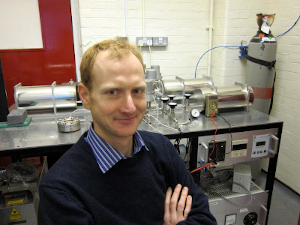 Pieter Vermeesch is a Professor in Geochronology at University College London (UCL) and the director of the London Geochronology Centre (LGC). His research interests include geochronology, thermochronometry, aeolian geomorphology and sedimentary provenance analysis, using the U-Pb, Ar-Ar, fission track, U-Th-He and cosmogenic nuclide methods. As a firm believer in free and open research software, he has developed a number of widely used computer programs (such as IsoplotR, provenance and RadialPlotter) to process and interpret geochronological data.
Pieter Vermeesch is a Professor in Geochronology at University College London (UCL) and the director of the London Geochronology Centre (LGC). His research interests include geochronology, thermochronometry, aeolian geomorphology and sedimentary provenance analysis, using the U-Pb, Ar-Ar, fission track, U-Th-He and cosmogenic nuclide methods. As a firm believer in free and open research software, he has developed a number of widely used computer programs (such as IsoplotR, provenance and RadialPlotter) to process and interpret geochronological data.
Talk title: Geochronology as a compositional data problem
Geology is a historical science, in which timing is of the utmost importance. The geologic time scale is calibrated using isotopic 'clocks' that are based on the radioactive decay of 'parent' isotopes (e.g., U-238, Rb-87, K-40) to radiogenic 'daughter' isotopes (e.g., Pb-206, Sr-87, Ar-40) in the presence of non-radiogenic 'sister' isotopes (e.g., Pb-204, Sr-86, Ar-36). Together, these three types of isotopes form a compositional data space. A huge edifice of sophisticated mathematical-statistical tools has been constructed to process geochronological data. Unfortunately, these tools ignore the compositional nature of isotopic measurements. Ratio correlation and the Aitchison geometry impose a covariance structure on isotopic data that permeates throughout geochronology. Capturing this covariance structure requires a complete re-evaluation of the isotopic data processing chain, beginning with the acquisition of raw mass spectrometer data. The re-evaluation of isotopic data processing is tedious and branches out into many directions. However, it is an effort worth making because it greatly improves the precision and accuracy of geochronology, which benefits all the disciplines that depend on it.
Shaunna Morrison - Andrei Borisovich Vistelius Research Award 2023↑
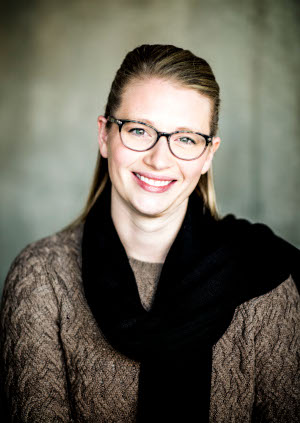 Shaunna M. Morrison is a mineralogist and planetary scientist with expertise in crystallography, crystal chemistry, and the application of data driven techniques. Morrison is the 4D (Deep Time Data Driven Discovery) Initiative Co-Director at the Carnegie Institution for Science’s Earth and Planets Laboratory, former Project Manager of the Carnegie led Deep-Time Data Infrastructure (DTDI), a Co-Investigator of the CheMin X-ray diffraction instrument on the NASA Mars Science Laboratory (MSL) mission, a collaborator on the NASA Astrobiology ENIGMA Project, a Co-Investigator of the NASA Astromaterials Data System, and a data contributor and collaborator of the RRUFF Project, including the Mineral Evolution Database (MED), Mineral Properties Database (MPD), and the Evolutionary System of Mineralogy Database (ESMD). Morrison builds on her technical and theoretical background in crystallography, crystal chemistry, and martian mineralogy, to explore new techniques in multidimensional, multivariate analysis and visualization by employing a range of advanced analytics and machine learning techniques to better understand the complex relationships among Earth and planetary materials, their formational environments through deep time, and their coevolution with the biosphere, including identifying and characterizing mineralogical signs of life.
Shaunna M. Morrison is a mineralogist and planetary scientist with expertise in crystallography, crystal chemistry, and the application of data driven techniques. Morrison is the 4D (Deep Time Data Driven Discovery) Initiative Co-Director at the Carnegie Institution for Science’s Earth and Planets Laboratory, former Project Manager of the Carnegie led Deep-Time Data Infrastructure (DTDI), a Co-Investigator of the CheMin X-ray diffraction instrument on the NASA Mars Science Laboratory (MSL) mission, a collaborator on the NASA Astrobiology ENIGMA Project, a Co-Investigator of the NASA Astromaterials Data System, and a data contributor and collaborator of the RRUFF Project, including the Mineral Evolution Database (MED), Mineral Properties Database (MPD), and the Evolutionary System of Mineralogy Database (ESMD). Morrison builds on her technical and theoretical background in crystallography, crystal chemistry, and martian mineralogy, to explore new techniques in multidimensional, multivariate analysis and visualization by employing a range of advanced analytics and machine learning techniques to better understand the complex relationships among Earth and planetary materials, their formational environments through deep time, and their coevolution with the biosphere, including identifying and characterizing mineralogical signs of life.
Talk title: Harnessing the complexity of minerals: Data-driven exploration of evolving Earth and planetary systems
Rapidly expanding mineral data resources have created an opportunity to characterize changes in near-surface mineralogy through deep time and to relate these findings to the geologic and biologic evolution of our planet over the past 4.5 billion years. Data-driven studies employing advanced analytical and visualization techniques such as mineral ecology, network analysis, and association analysis, allow us to begin tackling big questions in Earth, planetary, and biosciences, including those related to
- (1) the relationships of mineral formation and preservation with large-scale geologic processes, such supercontinent assembly, the oxidation of Earth’s atmosphere, and changes in ocean chemistry.
- (2) the abundance and likely species of as-yet undiscovered mineral, as well as the probability of finding a mineral or mineral assemblage at any locality on Earth or another planetary body.
- (3) exploring the possibility that Earth’s mineral diversity and distribution is a biosignature.
- (4) characterizing the origins of all mineral species through the development of the Evolutionary System of Mineralogy – a system that will provide a framework for predicting the formational conditions of mineral species of unknown origin.
- (5) lastly, integrating across disciplines and exploring ideas that one field alone cannot fully characterize (e.g., how the geochemical makeup of our planet affected the emergence and evolution of life, and, likewise, how life influenced chemical composition and geological processes throughout Earth history).
Behnam Sadeghi - Andrei Borisovich Vistelius Research Award 2023↑
 Behnam Sadeghi is a Research Fellow at Australian Resource
Research Centre (ARRC), at CSIRO, Australia, and a Fulbright
Research Scholar at the Earth and Planets Laboratory (EPL),
Carnegie Institution for Science, Washington, D.C., USA. He is also
a Visiting Research Fellow at the Earth and Sustainability Science
Research Centre (ESSRC), University of New South Wales (UNSW),
Sydney, Australia, from which he received his Ph.D. in 2020. He is
also the Honorary Research Fellow of EarthByte Group, University
of Sydney (USYD), Australia. Behnam’s research interests are
mainly related to mineral exploration (currently Critical Minerals),
urban and environmental geochemistry, integrated with
mathematical geosciences (fractal/multifractal modelling, and
compositional data analysis), geostatistics (simulation and
uncertainty quantification), GIS, and geospatial data analytics.
Behnam is the first recipient of the IAMG Founders Scholarship
Award, in 2020. As a Senior Exploration Geologist, he is the Fellow
of the Association of Applied Geochemists (FAAG), Australian
Institute of Geoscientists (FAIG), Australian Institute of Mining and
Metallurgy (FAusIMM), and the lifetime member of IAMG.
Behnam Sadeghi is a Research Fellow at Australian Resource
Research Centre (ARRC), at CSIRO, Australia, and a Fulbright
Research Scholar at the Earth and Planets Laboratory (EPL),
Carnegie Institution for Science, Washington, D.C., USA. He is also
a Visiting Research Fellow at the Earth and Sustainability Science
Research Centre (ESSRC), University of New South Wales (UNSW),
Sydney, Australia, from which he received his Ph.D. in 2020. He is
also the Honorary Research Fellow of EarthByte Group, University
of Sydney (USYD), Australia. Behnam’s research interests are
mainly related to mineral exploration (currently Critical Minerals),
urban and environmental geochemistry, integrated with
mathematical geosciences (fractal/multifractal modelling, and
compositional data analysis), geostatistics (simulation and
uncertainty quantification), GIS, and geospatial data analytics.
Behnam is the first recipient of the IAMG Founders Scholarship
Award, in 2020. As a Senior Exploration Geologist, he is the Fellow
of the Association of Applied Geochemists (FAAG), Australian
Institute of Geoscientists (FAIG), Australian Institute of Mining and
Metallurgy (FAusIMM), and the lifetime member of IAMG.
Talk title: Decision-making for follow-up mineral exploration based on spatial uncertainty of geochemical data
Jennifer McKinley - Distinguished Lecturer 2023↑
 Jennifer McKinley is a Professor and Director of the Centre for GIS and Geomatics, in Geography, Queen’s University Belfast. Her research interests include the development and application of spatial analysis techniques, geostatistics and compositional data analysis in ground and remotely sensed earth processes, health and the environmental impacts from natural and anthropogenic sources, criminal and environmental forensics. Jennifer is a Past IAMG President (2016-2020) and current Councillor of the International Union of Geosciences (IUGS 2020-2024) and President of the Governing Council of the Deep-time Digital Earth Initiative (DDE).
Jennifer McKinley is a Professor and Director of the Centre for GIS and Geomatics, in Geography, Queen’s University Belfast. Her research interests include the development and application of spatial analysis techniques, geostatistics and compositional data analysis in ground and remotely sensed earth processes, health and the environmental impacts from natural and anthropogenic sources, criminal and environmental forensics. Jennifer is a Past IAMG President (2016-2020) and current Councillor of the International Union of Geosciences (IUGS 2020-2024) and President of the Governing Council of the Deep-time Digital Earth Initiative (DDE).
Talk title: Spatial Analytics for Geoforensics and Geohealth
Xavier Emery - Georges Matheron Lecturer 2023↑
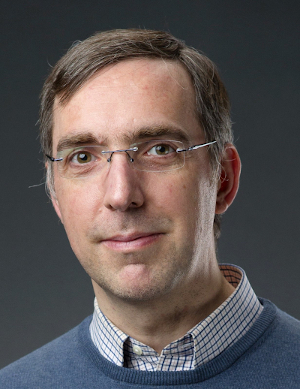 Xavier Emery is a professor at the Department of Mining Engineering and a researcher at the Advanced Mining Technology Center (AMTC) at Universidad de Chile. His research interests are the development of geostatistical tools, models and algorithms and their applications to the evaluation of mineral resources and reserves, including the geological, geotechnical and geometallurgical modeling of mineral deposits, the quantification of geological uncertainty and its impact in exploration, strategic and operational mining decisions.
Xavier Emery is a professor at the Department of Mining Engineering and a researcher at the Advanced Mining Technology Center (AMTC) at Universidad de Chile. His research interests are the development of geostatistical tools, models and algorithms and their applications to the evaluation of mineral resources and reserves, including the geological, geotechnical and geometallurgical modeling of mineral deposits, the quantification of geological uncertainty and its impact in exploration, strategic and operational mining decisions.
Talk title: A journey into covariance models for spatial data
Covariance (positive semidefinite) functions are an essential tool in spatial statistics, machine learning, mathematics and computer sciences, among others. This work gives an overview on characterizations and properties of matrix-valued covariance models for vector random fields defined in a Euclidean space, a sphere, the product of two Euclidean spaces, or the product of a Euclidean space and a sphere, which can be used to represent variables that are coregionalized in a limited portion of the geographical space or on a large portion of the Earth's surface, and whose variations may also depend on time or on the direction along which the variables are measured. We emphasize spectral representations that play an important role in the definition of valid parametric models and in the simulation of spatial or spatiotemporal random fields. We then provide matrix-valued versions of well-known covariance models, such as the Matérn covariance in the Euclidean space, the Gneiting covariance in space cross time or the exponential covariance on the sphere, and analytical expressions for more general parametric families of matrix-valued covariance functions, many of which involve special functions or depend on basic auxiliary functions that control the spatial or temporal marginal covariances. Of particular interest are the definition of compactly supported models or of nonseparable models in product spaces, and the identification of sufficient validity conditions allowing for more flexible parameterizations than those currently available. An example to the modeling of geotechnical data is presented to illustrate the usefulness of regionalizing these data in a product space to account for the dependence of the variable on the measurement direction.
IAMG2023 sponsored by:



